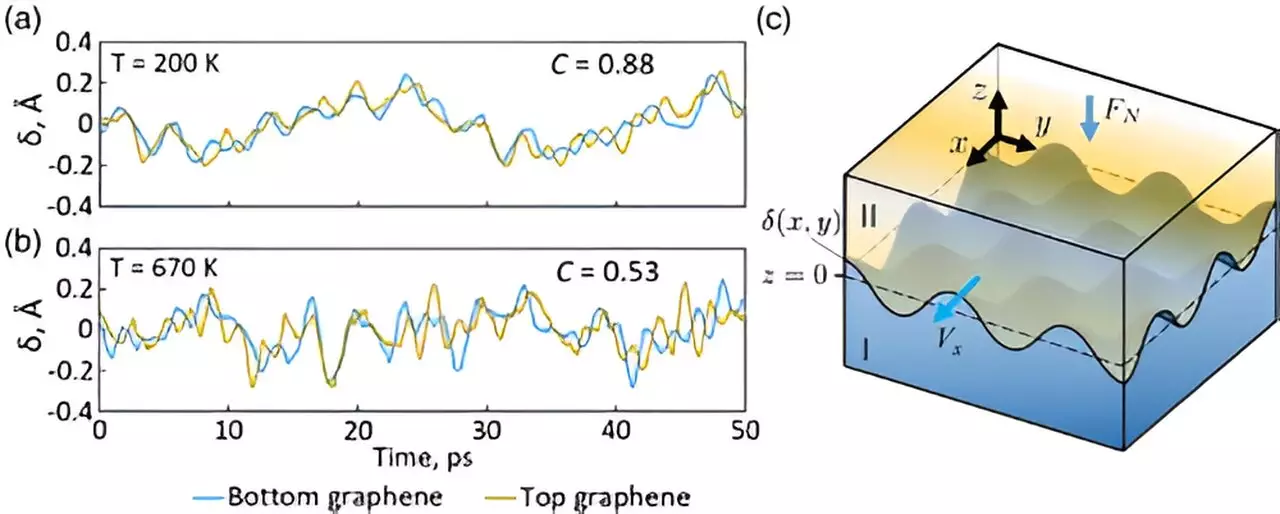Friction, a force we encounter in our daily lives when dragging heavy objects or sliding on surfaces, has been studied for centuries. The Amontons-Coulomb friction law, formulated over 300 years ago, states that friction is directly proportional to the weight of an object. However, recent research from Skoltech has revealed that this law does not hold for superlubricity, a phenomenon of extremely low friction. In fact, the team found that increasing the weight of a sliding body does not necessarily cause greater friction. These findings are not only counterintuitive but also have the potential to revolutionize various energy-saving mechanisms worldwide.
A team of researchers led by Professor Nikolay Brilliantov at Skoltech embarked on a comprehensive study to decipher the atomistic mechanism behind the surprising independence of friction force from the weight of a sliding body. The study involved experiments conducted by Professor Albert Nasibulin’s group, numerical simulations performed by Research Scientist Alexey Tsukanov, and theoretical conceptualization by Brilliantov himself. Through their collaborative efforts, the team was able to explain the phenomenon of superlubricity and formulate alternative friction laws that contrast sharply with the conventional Amontons-Coulomb laws.
Superlubricity is intimately linked to surfaces that are exceptionally smooth, even at the atomic level. One prime example is the surface of graphene, a carbon-based material. Additionally, for superlubricity to occur, the contact between the two surfaces must be incommensurate, which means that the atomic-level roughness of the surfaces should not align perfectly. When the roughness of one surface fits snugly into the grooves of the other, the two surfaces become locked, requiring a significant force to initiate sliding. In contrast, incommensurate surfaces do not lock and allow for easy sliding.
The Influence of Synchronous Fluctuations on Friction
Despite the presence of ultra-smooth and incommensurate surfaces, friction can still arise due to thermal fluctuations. The Skoltech researchers discovered that only synchronous fluctuations, where the two surfaces simultaneously bend while remaining in tight contact, play a crucial role in determining the friction force. These synchronous fluctuations require minimal energy and are independent of the weight of the sliding body. Hence, the weight does not impact the friction experienced.
An interesting finding from the study is that the relative sliding of the surfaces drives the synchronous fluctuations, known as “surface wrinkles,” in the direction of motion with the sliding velocity. This driving force dissipates energy within the material as heat, resulting in a dissipative friction force proportional to the sliding velocity. Higher temperatures lead to larger amplitudes of synchronous fluctuations, increasing the dissipative friction force. Moreover, a larger contact area between the surfaces results in more surface fluctuations that hinder relative motion, leading to higher friction.
Through a comprehensive quantitative analysis of these effects, the researchers were able to establish the laws of superlubricity. These laws provide insights and explanations for the unconventional behaviors of superlubric friction, such as the dependence on sliding velocity, temperature, and contact area. By understanding the atomistic mechanisms that govern superlubricity, scientists can now explore ways to control and exploit ultralow friction in various mechanisms, potentially saving significant amounts of energy on a global scale.
The elucidation of the unique laws governing superlubricity by Skoltech researchers sheds light on a phenomenon that challenges our conventional understanding of friction. This groundbreaking study opens up new opportunities for energy-saving technologies and paves the way for further research in controlling and harnessing ultralow friction. By delving into the microscopic world of friction, scientists are uncovering fundamental principles that could revolutionize numerous systems and have a profound impact on our energy consumption.


Leave a Reply